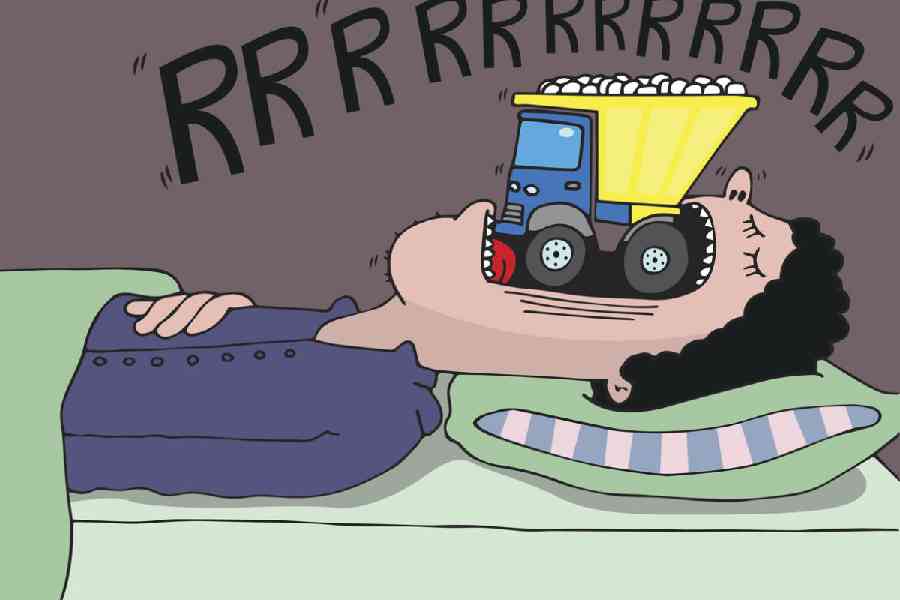Snores are loud sounds of varying frequencies produced during deep sleep that disturb everyone. It is a universal problem. Snoring can occur at all ages, even in children, but it is most common in overweight middle-aged men. The frequency increases as people age; 55 per cent of adult males and 45 per cent of women snore. The loud sound disturbs the sleeper and anyone else in the same room.
Snoring produces a loud rasping noise intermittently throughout the night. It can be acute, occurring when a person has a respiratory infection, or chronic, occurring every night.
Snoring occurs in children if there is an obstruction to the free flow of air into and out of the respiratory tract. The nose may have polyps, or the adenoids and tonsils may be enlarged. This can produce noisy mouth breathing even during the day. Allergies and viral and bacterial respiratory infections aggravate it. Children exposed to allergens like pollen, cigarette smoke, mosquito repellents or even room fresheners may snore.
A physician can usually diagnose the reason for snoring in children. Treatment involves avoiding allergens. Nasal sprays and tablets may be prescribed. If there is no response after 2-3 months, then surgical removal of the tonsils and adenoids can be considered.
Adult men are more likely to snore than women but after menopause, the number of affected women increases. As people age, they tend to put on weight. Fat gets deposited around the neck and obstructs the free flow of air. Also, the soft palate and tongue tend to fall back in overweight people with a short, thick neck. This snoring can progress to obstructive sleep apnoea, a life-threatening condition.
In obstructive sleep apnoea, loud snoring and breathing are followed by the total cessation of breathing. So the person lies still, not breathing. It looks like they may have died in their sleep. As soon as someone reaches out to investigate, they start breathing again. The sound slowly increases and reaches a crescendo, only to stop again. The cessation lasts around 10 seconds and occurs at least five times an hour.
Every time the person stops breathing, the heart responds by beating rapidly because no oxygen enters the body. The blood pressure also tends to rise. All these changes stimulate the respiratory centre, and breathing starts again. If this response does not occur fast enough, the person can die in his or her sleep.
Obstructive sleep apnoea is one of the causes of heart attack, stroke and also sudden death in the night. It can also activate and precipitate diabetes in susceptible people.
People who snore are the butt of jokes and comedies. But snoring is a very serious condition as it can progress to obstructive sleep aponea.
To tackle snoring:
Obstructive sleep apnoea may be serious enough to require an oxygen mask or catheter supplementation and positive pressure ventilation.
The writer has a family practice at Vellore and is the author of Staying Healthy in Modern India. If you have any questions on health issues please write to yourhealthgm@yahoo.co.in

